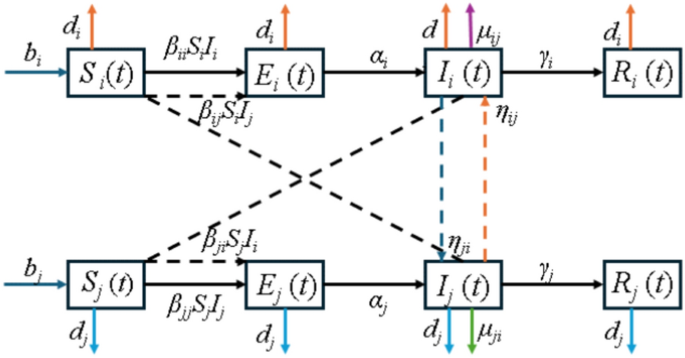
I recently came across a headline that said: “Study finds healthy women have breast cancer-like cells.”1Naturally, it caught my attention, and I noticed that the article had been reposted across multiple online sources, including Reddit. This prompted me to dig deeper into the study behind the title. As oncology nurses, our role is not only to understand emerging research but also to translate these findings into clear and meaningful information for patients. This article aims to detail the study findings and explore their potential implications for nursing practice.
Amanda Brink, DNP, APRN, FNP-BC, AOCNP

Examination of breast tissue for healthy women
The original study, published in nature Lin et al describe human breast tissue as a complex network consisting of ducts and lobules composed of epithelial cells.2 The Human Breast Cell Atlas Project has identified different cell types in normal breast tissue, including luminal cells (responsible for milk secretion).3 and myoepithelial basal cells (which help the ducts contract during milk secretion).3 It is important to study these cells because they have the ability to turn into cancer cells, leading to breast cancer.2
In normal tissues, most cells are diploid, meaning they contain two sets of chromosomes, one from each parent.4 However, some studies have shown that aneuploid cells, which contain an abnormal number of chromosomes,5 It can also be found in normal tissues, including the breast. The presence of aneuploid cells is important because they are often found in cancerous tissue, and their presence in normal tissue can serve as an early indicator of cancer development.2
Advances in single-cell DNA sequencing (scDNA-seq), a method that allows researchers to examine the DNA of single cells, have made it possible to identify small populations of aneuploid cells in normal tissue. In this study, the researchers used scDNA-seq in combination with ATAC (Assay for Accessible Chromatin) sequencing, a technique that looks at the accessibility of chromatin — the material that makes up chromosomes and regulates gene activity.6 These combined approaches allowed researchers to explore genetic changes in normal breast tissue and compare them to those found in invasive breast cancers.
The study analyzed cells from 49 healthy women who underwent breast reduction surgery. Data from three women, aged 35 to 45, revealed that a small portion of their epithelial cells were aneuploid. In addition, these cells showed chromosomal abnormalities (CNAs). For example, in a 44-year-old woman, 5.64% of her epithelial cells were aneuploid. Similar results were observed in two other women, in whom 1.03% and 4.85% of their cells showed aneuploidy. Despite the presence of these cells, histopathological analysis revealed that the cells maintained their normal appearance under the microscope, indicating no signs of cancer or other diseases.
To compare CNAs in normal breast tissue with those in invasive breast cancers, researchers analyzed the frequency and types of CNAs in normal tissue, identifying frequent events such as chr1q gain and chr16q loss. These events were similar to those found in estrogen receptor-positive (ER-positive) breast cancers, as shown by data from The Cancer Genome Atlas. This suggests that CNAs in normal cells, such as chr1q gain and chr16q loss, could serve as early markers of cancer risk, especially for ER-positive breast cancer.
The researchers also found that some CNA events, such as chr1q gain, chr16q loss, and chr10q loss, often occur together in the same cells, and likely work together to increase the survival and growth of these cells. This co-occurrence was particularly notable in ER-positive breast cancer, where these events appear to play a role in cancer initiation.
Overall, these findings suggest that chromosomal alterations in normal breast tissue may be early signals of cancer development, and understanding these events could provide insight into cancer prevention and early detection strategies.
Nursing considerations
The study findings have implications for early detection and prevention of breast cancer, suggesting that chromosomal abnormalities in normal breast tissue could serve as early markers of cancer development. However, these results are still in the early stages of research and are not yet ready for use in clinical investigations.
Oncology nurses can play a key role in helping patients understand the implications of these emerging findings, explaining that although this research may eventually lead to new screening strategies, it has not yet become part of routine clinical practice. Nurses can also reinforce the importance of following current screening guidelines to ensure women are monitored for breast cancer risk.
In addition, oncology nurses can educate patients about how lifestyle and environmental factors influence cancer development, as well as the role of genetic alterations in the tumor microenvironment. While this study focuses on breast cancer, the concept of chromosomal abnormalities as early indicators of cancer risk may apply to other cancers, further highlighting the broader importance of this research.
As more studies explore these genetic alterations, oncology nurses will need to stay informed and continue to guide patients through the evolving landscape of cancer prevention and early detection. Future research will be essential in determining how to incorporate these findings into clinical practice.
References
- Naji C. The study found that healthy women have cells that resemble breast cancer. November 20, 2024. Accessed November 30, 2024. https://www.mdanderson.org/newsroom/healthy-women-have-cells-that-resemble-breast-cancer.h00-159702279.html.
- Lin Y, Wang J, Wang K, et al. Normal breast tissue contains rare populations of aneuploid epithelial cells. nature. Published online 20 November 2024. doi:10.1038/s41586-024-08129-x
- Newmark L. Reserve roles of luminal and basal cells in milk production. International Milk Genomics Consortium. January 11, 2024. Accessed November 30, 2024. https://www.milkgenomics.org/?splash=molecular-mechanisms-of-milk-production-reveal-an-evolutionary-back-up-plan.
- Diploid. Genomics education programme. Accessed November 30, 2024. https://www.genomicseducation.hee.nhs.uk/glossary/diploid.
- Aneuploidy. Genomics education programme. Accessed 30 November 2024. https://www.genomicseducation.hee.nhs.uk/glossary/aneuploidy/
- Meskimin CL, Chan ER, Haines GL. Accessible chromatin assay using ATAC-seq data. Currency Protok Home Genet. 2017;92:20.4.1-20.4.13. Published January 11, 2017. doi:10.1002/cphg.32






